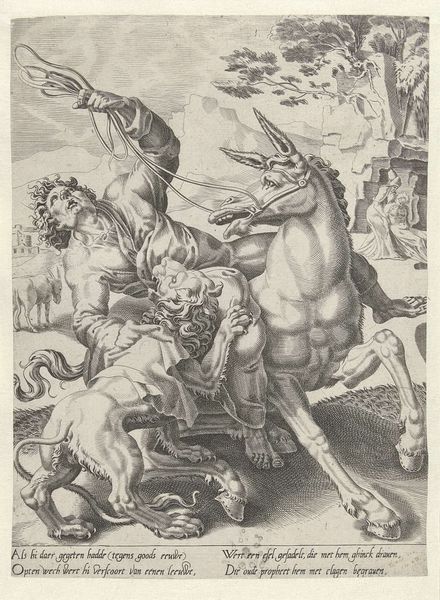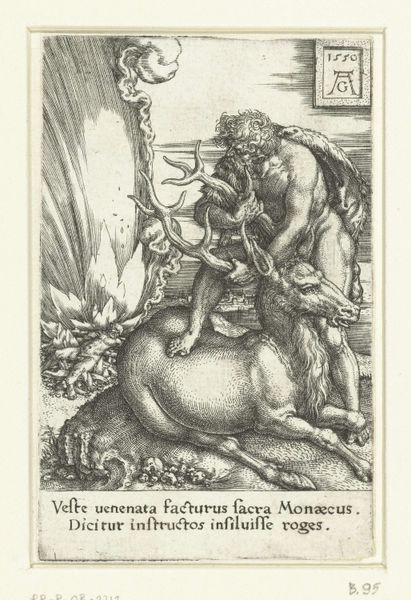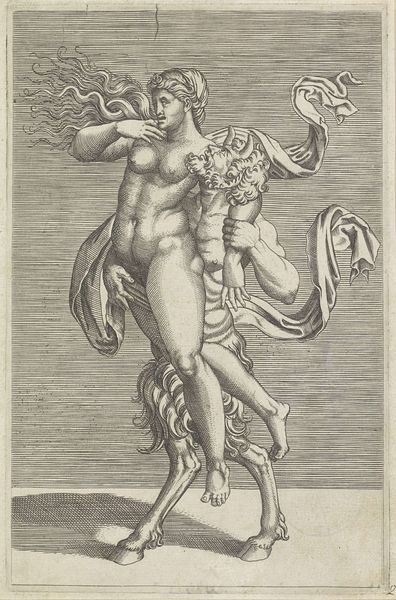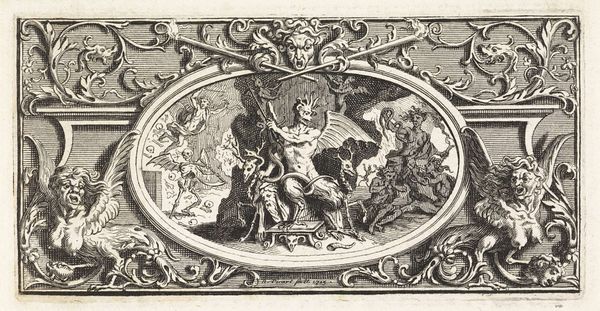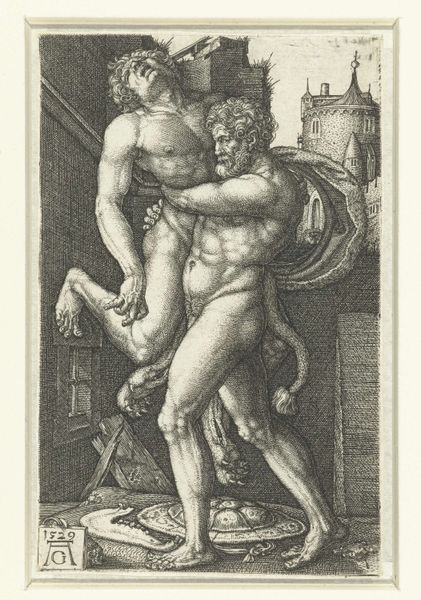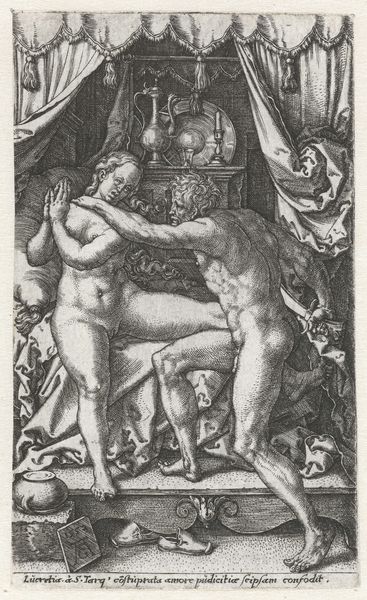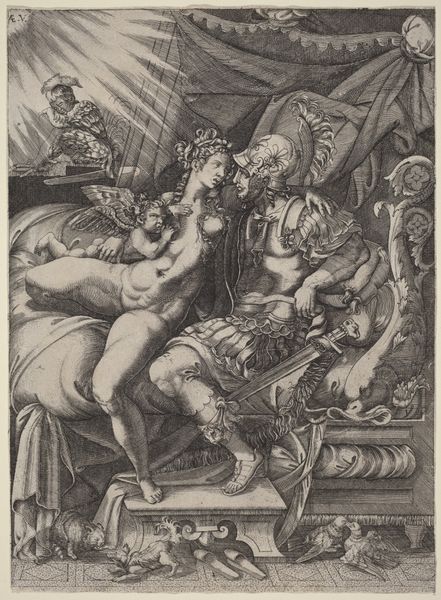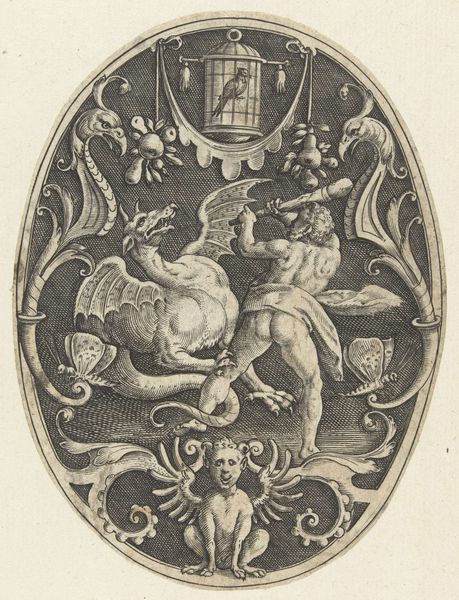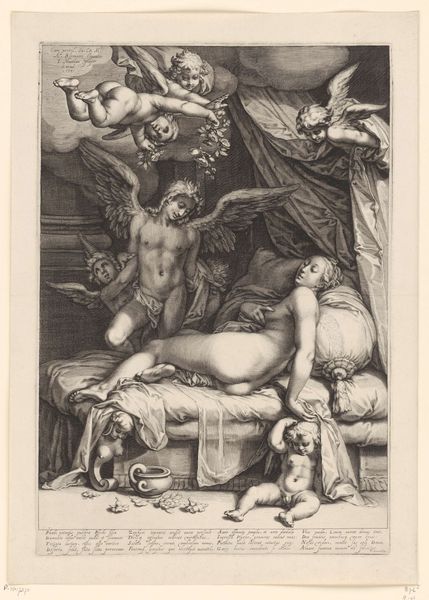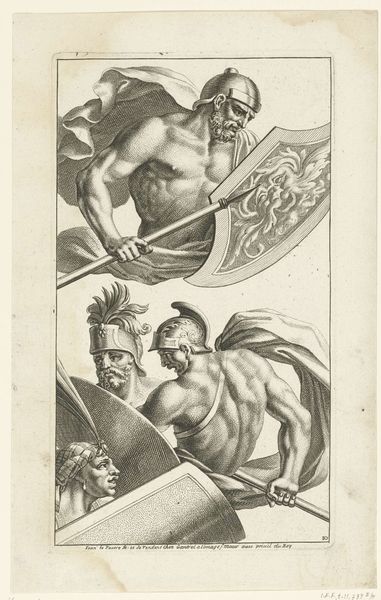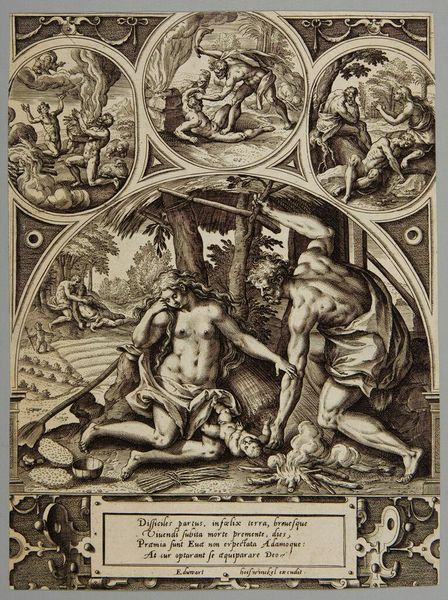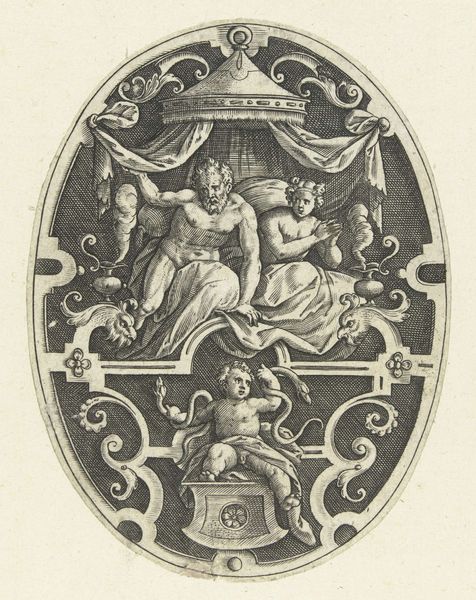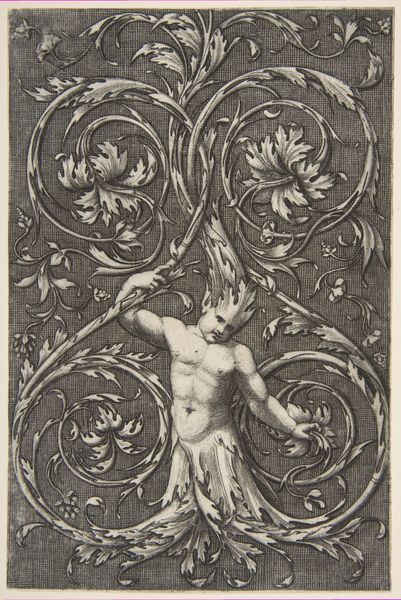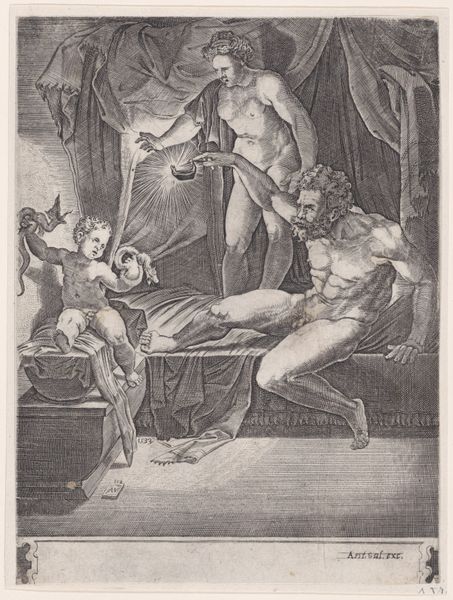
print, engraving
#
allegory
#
baroque
# print
#
figuration
#
line
#
decorative-art
#
engraving
Dimensions: height 149 mm, width 86 mm
Copyright: Rijks Museum: Open Domain
Curator: So, what stands out to you in Bernard Picart's "Cartouche met nereïde en sater omgeven door muziekinstrumenten," made in 1712? It's an engraving. Editor: The title is a mouthful! There’s so much going on here, with the musical instruments and the mythical figures. I find it almost overwhelming; a sensory overload in a visual form. What can you tell me about it? Curator: Overwhelming is a key reaction! Baroque art often aimed for that effect. But let's consider the social context: what kind of power does excess display, and who gets to create and consume such abundance? Think about the Dutch Republic in 1712. What ideas might this image of classical figures surrounded by music convey about societal values and hierarchies at the time? Editor: Well, there's the cartouche itself – suggesting a place for a name or dedication. Was this meant for someone important, someone wealthy perhaps, reinforcing their status through association with mythology and the arts? Curator: Exactly! And the nereid and satyr - mythological figures, one a sea nymph, the other associated with wildness and revelry. What statement is the artist making by juxtaposing such different beings in this visual space? Consider gender roles in the early 18th century. How might the satyr embody certain stereotypes or anxieties? Editor: Maybe the satyr represents unrestrained masculine energy while the nereid is supposed to symbolize feminine grace, both framed and, in a sense, contained by music, by art? It does bring to mind how women are frequently framed or placed in the arts by men. Curator: Precisely. And beyond its decorative function, the image hints at the complex relationships between gender, power, and artistic expression, echoing in ways that resonate even today. How can art critique or perpetuate social norms, and what responsibility does the artist hold in that process? Editor: I never would have thought of all that just from looking at it! I realize I need to do some more research and questioning! Curator: Absolutely, keep questioning, keep connecting art to the broader social dialogues. The power of art lies in its ability to ignite these very discussions across time!
Comments
No comments
Be the first to comment and join the conversation on the ultimate creative platform.
